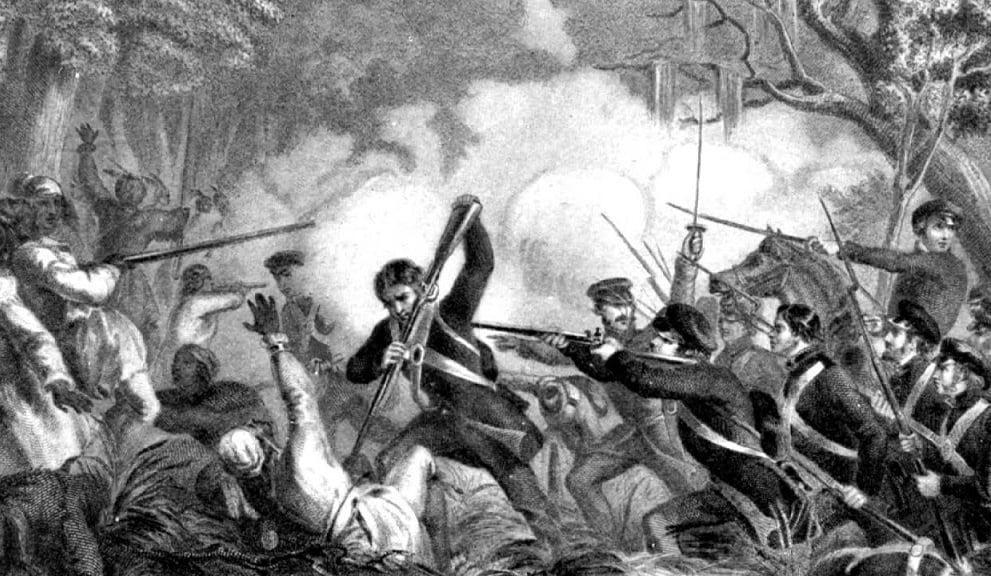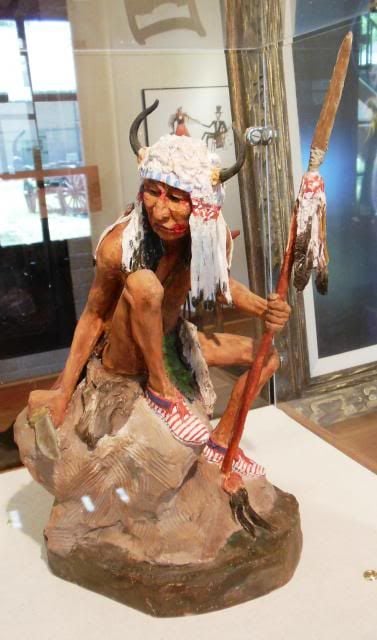The Fort Marion Prisoners
Following the so-called Red River wars in Oklahoma and Texas in 1875, the army had intended to try Indian leaders and warriors before a military commission, but the attorney general ruled that a military trial would be illegal as a state of war cannot exist between a nation and its wards. Thus the Indians were simply imprisoned without a trial. In order to facilitate these prisoners, the army reconditioned Fort Marion, Florida as a prison and placed Lieutenant Richard Pratt in command.
The army transported 72 Cheyenne, Kiowa, Comanche, Arapaho, and Caddo Indian prisoners from the Red River War to Fort Marion in Florida. In addition to arresting known leaders, army officers had arbitrarily singled out young men from the line of surrendering Indians, labeled them ring leaders, and arrested them. In one instance on the Cheyenne Reservation, a drunken army officer simply lined up the Indians and counted out eighteen from the right of the line. All of these eighteen Cheyenne men were sent to prison with no review of their cases, nor any concern for any possible crime they might have committed. For many of the young men their primary crime was that they were Indians who had led a traditional Plains Indian life. From an Indian perspective, no crimes had been committed.
From an Indian viewpoint, imprisonment was a form of humiliation. The families of the prisoners assumed that their loved ones had been taken away to be executed. In fact, most of the prisoners believed that the army intended to hang them.
While most of the prisoners were men, the group included one Cheyenne woman prisoner-Buffalo Calf Woman, the wife of Medicine Water-who had killed a non-Indian farmer. Also included in the group were a number of wives and children who had refused to be separated from their families.
Eleven of the Comanche and Kiowa prisoners were actually Mexican captives who had been raised as tribal members.
When the Indian captives arrived at Fort Marion, Lieutenant (later Captain) Richard Pratt had the prisoners’ hair cut and issued them European-style clothing. The Indian response to the clothing was to cut off the legs of the pants, discard the upper portion, and wear the legs as leggings in the Indian fashion. For many Plains Indian men, the crotches of pants were binding, confining, and uncomfortable.

Captain Pratt and some of the prisoners at Fort Marion are shown above.

A group of prisoners in 1877 is shown above. They have been issued military-style uniforms.

Cheyenne prisoner Howling Wolf is shown above.

The courtyard at Fort Marion is shown above.
By using rigorous military discipline, Pratt intended to force the Indians to assimilate totally into American culture. He also provided them with English lessons. From time to time, Indian dances were staged for important visitors.
Pratt also encouraged the prisoners to produce works of art for sale and allowed them to visit the nearby beaches. The Indian artists used ledger books and their drawings sold for approximately $2 per book. The art in the books was often given concise, simple captions. The artists were also encouraged to sign their works as this made them more valuable to a public which was accustomed to European art.

An example of Kiowa ledger art is shown above.

Ledger art by Cheyenne leader Making Medicine is shown above.
In general, the art books produced by the prisoners at Fort Marion were a continuation of traditional Plains Indian art in which the artists drew images of their battle exploits. Traditionally, this art was done on skins and tipi covers. The artists had to have earned the right to make these images through their individual bravery in battle. The ledger art from Fort Marion is viewed by art historians today as a continuation of the rich pictorial Plains Indian traditions.
Not all of the images created by the Indian artists at Fort Marion were traditional Plains Indian images: the artists also drew scenes of their journey to Florida and the new surroundings in which they found themselves.
In 1877, Captain Richard Pratt sent a lengthy letter to the War Department reminding the government that the Indian prisoners at Fort Marion had now been held for two years. He included petitions from Making Medicine and from Minimic. Pratt recommended that the Indians be set free.
In 1878, Indian prisoners of war held at Fort Marion were released to the custody of the Indian Office (now called the Bureau of Indian Affairs). While most “returned to the blanket” in spite of the intense efforts to assimilate them to non-Indian ways, seventeen went to Virginia to attend the Hampton School for Negroes.
Instead of returning home, Cheyenne leader Making Medicine decided to remain in the east and to take training in the Christian ministry. He changed his name to David Pendleton Oakerhater. Similarly, Cheyenne leader Zotom remained in the east and changed his name to Paul Caryl Zotom. In 1881 both men were ordained as Episcopal deacons in a joint ceremony. They returned to the Cheyenne reservation in Oklahoma to spread the faith among their people.

Shown above is Oakerhater in 1881. In 1985, the Episcopal Church declared Oakerhater a saint.

Zotom is shown above. By 1889, Zotom had returned to his native spiritual traditions and had abandoned Christianity.



